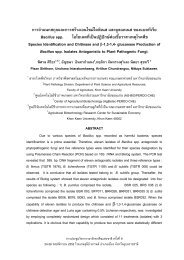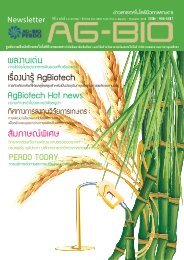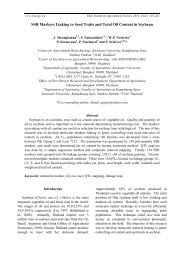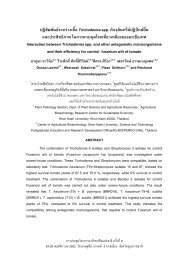Biosafety Manual PDF - Lawrence Berkeley National Laboratory
Biosafety Manual PDF - Lawrence Berkeley National Laboratory
Biosafety Manual PDF - Lawrence Berkeley National Laboratory
Create successful ePaper yourself
Turn your PDF publications into a flip-book with our unique Google optimized e-Paper software.
<strong>Biosafety</strong> <strong>Manual</strong><br />
IBC-approved version (May 18, 2010)<br />
Blood Collection. Source: HHS CDC Office of Health and Safety, <strong>Biosafety</strong> in the <strong>Laboratory</strong><br />
presentation (Web accessed May 2010)<br />
Appendix H of BMBL states that a risk assessment should be conducted for human and primate<br />
cells based on the origin and source of cells or tissues, and such cells should be handled using<br />
BL2 practices and containment (see Section 4.4 for further discussion of BLs). While many<br />
requirements in the BMBL and OSHA Bloodborne Pathogen Standard are similar to each other,<br />
the OSHA standard additionally requires initial and annual BBP training, availability of hepatitis<br />
B vaccination at no cost to employees, and a written Exposure Control Plan (ECP).<br />
Researchers satisfy documentation requirements for a risk assessment, BL2 containment, and<br />
an ECP once they have an approved Biological Use Authorization (BUA). BL2 containment<br />
must be used unless the BUA risk assessment indicates that alternative controls are sufficient.<br />
BUAs are further discussed in Section 5.1 of this manual and PUB-3000.<br />
LBNL work that involves BBP materials will be performed in compliance with the Fed/OSHA<br />
Bloodborne Pathogens Standard and BMBL. LBNL’s program for compliance with these<br />
standards is integrated into the larger LBNL biosafety program that is described in this manual.<br />
3.3.5 Recombinant Materials, Organisms, and Agents<br />
This section defines basic biological terms and processes that are key to<br />
understanding recombinant risks and concerns. Genetic material plays a<br />
fundamental role in determining the structure and nature of cell<br />
substances. It exists in the nucleus, mitochondria, and cytoplasm of a cell<br />
or organism, and is capable of self-propagation and genetic variation.<br />
The genetic material of a cell can be a gene, a part of a gene, a group of genes, a<br />
deoxyribonucleic acid (DNA) molecule, a fragment of DNA, a group of DNA molecules, or the<br />
entire genome of an organism. A nucleic acid is a macromolecule composed of chains of<br />
monomeric nucleotides. In biochemistry, nucleic acids carry genetic information or form<br />
structures within cells. The most common nucleic acids are DNA and ribonucleic acid (RNA).<br />
Nucleic acids are universal in living things, as they are found in all cells and viruses. The term<br />
genetic recombination is used to describe the process by which the strand of genetic material<br />
(usually DNA, but can also be RNA) is broken and then joined to a different DNA molecule to<br />
create recombinant genetic material. The NIH Guidelines defines recombinant DNA<br />
molecules as molecules constructed outside living cells by joining natural or synthetic nucleic<br />
acid segments to nucleic acid molecules that can replicate in a living cell or molecules that<br />
result from the replication of such molecules.<br />
Printed copies are not official versions of this manual. Before using the printed copy, verify that it is the most current version.<br />
24
















